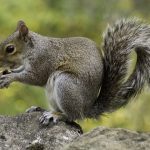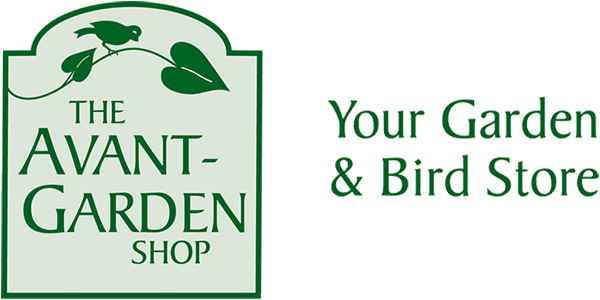
Keeping squirrels away from feeders can be a constant effort. They eat a lot of seed, which makes maintaining your feeder more costly. They also dominate the feeder, scaring the birds we want to attract away.
There’s another good reason to reduce squirrel and chipmunk access to your bird seed: they eat bird eggs and chicks!
This means that if your bird feeding set-up isn’t squirrel-proof, you’re not only feeding the birds in your garden, but also many critters that will eat those birds’ eggs and young! This is counter-productive and raises ethical questions, as well.
When you know there’s a bird-eating predator around, such as cats, a Sharp-shinned Hawk, Cooper’s Hawk, or Merlin, we advise not maintaining your feeder for a few days. The seed attracts birds, which essentially creates a trap for them as the predators learn that the feeder is an all-you-can-eat buffet. If you take a break from filling the feeder for a few days, the predator might move on to more productive areas, and you can return to feeding your garden birds. A common concern here is that the birds might starve. This may be true in the deepest cold of winter, but there’s plenty of food available during the summer months when these predators are in this area (most hawks and falcons migrate south in the winter, and there are fewer outdoor cats around in the winter).
The situation is a bit different with squirrels. The impact on the birds isn’t as immediate: squirrels rarely eat adult birds. The effect is more delayed: feeding squirrels results in healthier squirrels who live longer, survive the winters, and produce more young, who have higher survival rates because of the abundant food. Squirrels are everywhere, so shutting down a feeder when they’re around would mean never enjoying a feeder.
The best approach is to ensure that your bird feeder(s) are squirrel-proof. This can be achieved through:
- Feeder placement: Hang the feeder from something that squirrels can’t access (such as a clothesline with a few open-ended plastic bottles on it on either side of the feeder).
- Baffles: Wide, conical baffles placed above and/or below the feeder can prevent squirrels from accessing the feeder. Squirrels can jump up to 5 feet high and launch themselves 10-12 feet (rarely up to 15 feet), so be sure to set the feeder pole up with enough room around it and use wide baffles to prevent climbers from making their way around the edge.
- Use a squirrel-proof feeder: Some feeders have spring-loaded mechanisms that allow birds to feed but that are triggered by the weight of a squirrel and close off access to the feed. The squirrels soon learn that they can’t get food from the feeder and move on.
The Avant-Garden Shop carries a Baffles & Weather Guards and several of the Squirrel Buster models.
Learn more from these related Garden Gate Episodes on CHEX TV
Episode 52- Discouraging large birds and squirrels
Episode 118 – Setting up a squirrel proof bird feeding station
Episode 2: Squirrel Baffles
Episode 1: Squirrel Buster Bird Feeders
